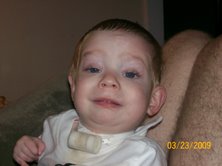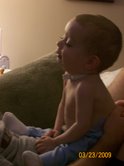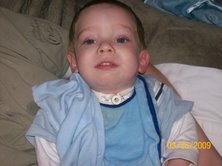We have a date for our NIH visit to meet Dr. Ellen Sidransky and her team, including Dr. Ozlem Goker-Alpan. July 13th through July 18th.
We’d have to leave Monday evening since Hannah has her Cerezyme treatment at TCH that morning, and we USUALLY get out of there by 1:00 PM, but after last week’s delay, we didn’t get out of there until 2 PM because the pharmacy was late. So, we want to make sure we have time to make it. We would return home that Saturday.
They had first mentioned keeping Hannah in the hospital during our 5-day visit, but I asked if we could please stay at the Children’s Inn there so we could be more comfortable and have freedom to just move around. I can’t imagine keeping her cooped up in a hospital crib for five days, especially if she isn’t being treated for anything!
I’m really looking forward to meeting Dr. Sidransky, as I have talked to her on the phone a few times. She sounds like a very impressive and passionate doctor. She has been studying GD2 and GD3 for many, many years. They really want to see Hannah since she this new mutation is pretty rare and never seen in combination with the 84gg. Because the D409H carries cardiac problems associated with it, she agrees that we need to have an echocardiogram for Hannah as well as check for minor hydrocephalus. They also want to do the skin biopsy to see if they can tell type 2 or type 3 as well as a couple of other studies.
As I mentioned before, my aunt and uncle live a block away from the NIH, so we will have family close by, which is great. Daddy is really disappointed he can’t go, but he just can’t take any more time off of work. Also, we just can’t afford to bring Abby and Ethan with us (even though me and Hannah would be paid for), so Daddy will stay home with them.
What is interesting is one week after we get back from the NIH, Hannah will be turning ONE YEAR OLD! What a milestone we hit!
 We started physical therapy at TCH yesterday. During her assessment last week, she was found to have “scattered skills,” meaning that her skills ranged from the 4-month level to the 8-month level. She has incredible upper boddy chest strength but incredibly poor abdominal and trunk strength, which is what is possibly causing most of her skill setbacks because she is using the wrong part of her body to do certain tasks.
We started physical therapy at TCH yesterday. During her assessment last week, she was found to have “scattered skills,” meaning that her skills ranged from the 4-month level to the 8-month level. She has incredible upper boddy chest strength but incredibly poor abdominal and trunk strength, which is what is possibly causing most of her skill setbacks because she is using the wrong part of her body to do certain tasks. When we found out that we were having a little boy, we were ecstatic. The pregnancy was going great. We had no complications until we hit the seven month mark. Then the complications started, and haven’t ended yet. Ethan James McKown was born at 33 weeks. He was 4lbs 2oz and 19inches long. He was a little guy, but we knew right away he was a fighter. He did well in the NICU for 3 weeks and we finally got to take him home on the forth of July 2007.
When we found out that we were having a little boy, we were ecstatic. The pregnancy was going great. We had no complications until we hit the seven month mark. Then the complications started, and haven’t ended yet. Ethan James McKown was born at 33 weeks. He was 4lbs 2oz and 19inches long. He was a little guy, but we knew right away he was a fighter. He did well in the NICU for 3 weeks and we finally got to take him home on the forth of July 2007. The children’s hospital was about a forty-five minute drive away. We got to the children’s hospital and were immediate reassured everything was going to be alright. We were in very good hands then. They admitted him to a room and he had a bad case of bronchitis and the flu on top of it. His poor little body couldn’t keep up but he sure was fighting hard! We were there for about a week and were released to go home.
The children’s hospital was about a forty-five minute drive away. We got to the children’s hospital and were immediate reassured everything was going to be alright. We were in very good hands then. They admitted him to a room and he had a bad case of bronchitis and the flu on top of it. His poor little body couldn’t keep up but he sure was fighting hard! We were there for about a week and were released to go home. I went to visit my brother in Topeka, KS which is about an hour away. Ethan would have breath holding spells, but none were as bad as that night. He went into a fit while grandma was feeding him. I took him from her and he stopped breathing. I immediately started CPR and tried to get him back. My brother called an ambulance but I luckily got him breathing again before they arrived. That was the longest three and half minutes of my life!
I went to visit my brother in Topeka, KS which is about an hour away. Ethan would have breath holding spells, but none were as bad as that night. He went into a fit while grandma was feeding him. I took him from her and he stopped breathing. I immediately started CPR and tried to get him back. My brother called an ambulance but I luckily got him breathing again before they arrived. That was the longest three and half minutes of my life!
Latest Comments